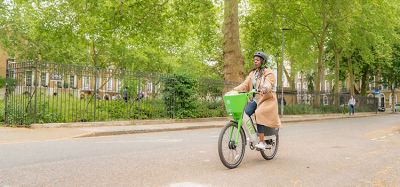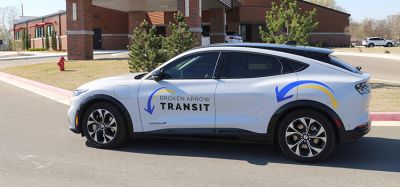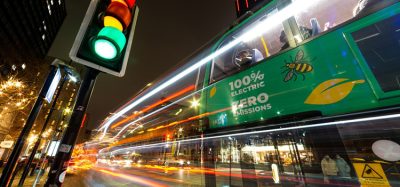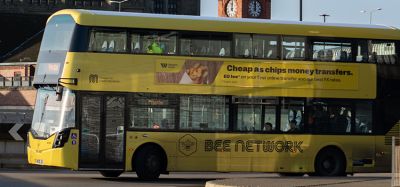New accessibility plan, ‘Equity in Motion’, published by Transport for London
- Like
- Digg
- Del
- Tumblr
- VKontakte
- Buffer
- Love This
- Odnoklassniki
- Meneame
- Blogger
- Amazon
- Yahoo Mail
- Gmail
- AOL
- Newsvine
- HackerNews
- Evernote
- MySpace
- Mail.ru
- Viadeo
- Line
- Comments
- Yummly
- SMS
- Viber
- Telegram
- Subscribe
- Skype
- Facebook Messenger
- Kakao
- LiveJournal
- Yammer
- Edgar
- Fintel
- Mix
- Instapaper
- Copy Link
Posted: 5 February 2024 | Intelligent Transport | No comments yet
TfL’s Equity in Motion commits to more than 80 new and ambitious actions to help to create a fairer, more accessible and inclusive transport network.
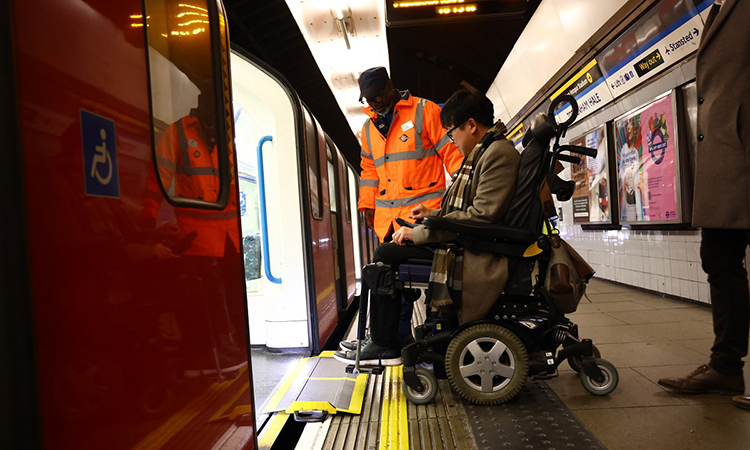

Credit: Transport for London - James Lee from TfL's Independent Disability Advisory Group uses a new mini ramp at Tottenham Hale station.
Transport for London (TfL) has published a new customer plan to help to create a fairer, more accessible and inclusive transport network for everyone. The new plan, Equity in Motion, commits to more than 80 new and ambitious actions to further build on TfL and the Mayor of London’s ongoing efforts to create a fairer and safer London.
The wide-ranging commitments in the plan cover key areas for improvements around accessible travel, keeping customers safe, understanding customers, affordable travel, inclusive information and connecting Londoners.
The plan commits to introducing an innovative bridging device across the London Underground (Tube) network by Summer 2024 for stations, which are designated step-free from street to train but where a small gap persists between train and platform. More than 45 mini ramps are now being introduced across the network, and this follows a TfL trial in 2022 on the Jubilee line. The device was designed to provide additional support and reassurance for customers, with TfL research showing that 63% of respondents would be more likely to travel with this device.
New research will also be carried out to understand the needs of a range of different communities across London, and TfL will create a new, inclusive Design Centre of Excellence. TfL will also be reviewing its approach to translating communications into different languages, including British Sign Language (BSL), increasing the number of step-free access stations, expanding the Project Guardian school sessions on sexual harassment and making it easier for people to report crime, antisocial behaviour, discrimination and safety concerns. These improvements, some of which are underway already, will help to make everyone feel welcome on the transport network, enable more people to travel confidently and with ease.
With almost a third of the capital’s population living in poverty and more than 15% reported as being disabled, millions of Londoners face barriers to using public transport. Factors including poor street environments, toxic air and road danger negatively impact all Londoners, but disproportionately affect marginalised groups.
These bold new commitments are part of a number of actions that the Mayor of London is taking to achieve the ambition of his Transport Strategy and to move London forward safely, inclusively and sustainably. The plan focuses on creating an equitable customer experience, protecting those travelling, enhancing connectivity, keeping travel affordable and reducing health inequalities, and includes a number of short-term and long-term commitments.
Several actions will be delivered in 2024, while others will be implemented by 2030, subject to government funding. The plan’s commitments include:
Accessible travel
- Increasing the proportion of step-free Tube stations – since Sadiq Khan became Mayor, the proportion of step-free access Tube stations has increased from a quarter to a third. Under this new plan, the proportion of step-free access stations will increase to half
- Introducing mini ramps to cover the gap between the train and platform at all London Underground platforms that are step-free to train
- Launching an innovation challenge aimed at improving travel for disabled people
- More dedicated spaces for wheelchair users and buggies on Bakerloo, Central and Waterloo & City line trains
- Conducting a feasibility study into how TfL can increase customer toilet provision
- Install priority seating moquettes to 1,000 Routemaster buses by 2025
- Deliver a new equality impact assessment (EqIA) awareness programme and supporting TfL staff with training.
Keeping customers safe
- Expand TfL’s Project Guardian school sessions on sexual harassment to 28,000 Year 9 students
- Make it easier for customers to report crime, antisocial behaviour and safety concerns, including adding reporting to TfL’s website and the TfL Go app by 2026
- Training staff to call out and help to reduce all forms of harassment, and to support victims
- Use safety audits to gather data to inform how to design public spaces to improve the safety of all customers, including women, girls and gender-diverse people
- A series of innovation challenges to look at reducing discrimination and improving safety on buses and escalators
- Continue to engage with communities on streetscape design schemes, including bus infrastructure, such as bus stop bypasses.
Understanding customers
- Creation of a new, inclusive Design Centre of Excellence
- Research to understand the needs of a range of communities in London, including LGBTQ+ people
- A review of TfL’s approach to customer and stakeholder engagement to ensure that a diverse range of voices are heard
- Frontline staff to complete disability equality training.
More affordable travel
- A new travel concession entitling eligible care leavers to half‑price bus and tram travel
- A study of how cost of travel affects people with protected characteristics, to inform TfL’s investment priorities.
Inclusive information
- Self-service to be introduced to Dial-a-Ride to enable booking, amendment and cancellation of trips
- A review of TfL’s approach to translating communications into different languages, including British Sign Language
- Virtual tools to be added to the TfL Go app and website to help customers to better understand the accessibility of the transport network
- Introduce hundreds of new real-time information displays for bus stops and shelters
- A review of wayfinding at interchanges to ensure that directions meet diverse needs.
Connecting Londoners
- Inclusivity audits at stations, as well as near developments
- Research to help build understanding of barriers to walking across protected characteristic groups
- Electric cycle hire to be expanded.
The Mayor of London, Sadiq Khan, said: “London is for everyone, and I am committed to making our transport network as fair and accessible as possible so that every Londoner can make the most of our fantastic city.
“TfL is committed to removing the barriers that people face when using the transport network and enabling more people to travel spontaneously, seamlessly and easily. Some of these vital improvements are already underway and there are many more to come, helping us to continue building a better, fairer London for everyone.”
Alex Williams, Chief Customer and Strategy Officer at Transport for London, said: “Our vision is a London where everyone can move around the city safely, inclusively and sustainably, and access to public transport is a fundamental component in making this happen. While we have taken steps to make our network more accessible, we know that much more needs to be done. Equity in Motion draws on the experiences and viewpoints of a range of Londoners, prioritising the areas that they want to see improved to create tangible actions that drive forward change and help make London a truly fair city.”
TfL has already begun work on many of the plan’s longer-term actions, including improving HGV safety standards, launching new cycle lanes and reducing road danger across London. Other longer-term actions include making further improvements to toilets across the network.
Agnes Fletcher, Member of Transport for London’s Independent Disability Advisory Group, said: “We were pleased to have the opportunity to contribute to the development of the Equity in Motion plan for London.
“All Londoners will benefit from the change that it promises, including more affordable travel and cleaner air. And more people with impairments, long-term health conditions and who are neurodivergent will be able to use the transport network, and to reach more of London safely and comfortably.
“Disabled people are part of every demographic and every community. The barriers we face just in getting around – to work, to access healthcare, to see family and friends, to access all the wonderful things London has to offer – can be reduced or removed by taking enabling actions like those in Equity in Motion. The result will be a cleaner, greener, more active and enjoyable London – where everyone feels as though they matter.”
Related topics
Infrastructure & Urban Planning, Passenger Accessibility, Passenger Experience, Public Transport, Security & Crime, Staff & Skills Development, Ticketing & Payments, Travel & Passenger Information, Vehicle & Passenger Safety, Workplace
Related modes
Bus & Coach, Underground
Related cities
London
Related countries
United Kingdom
Related organisations
Transport for London (TfL), UK Government
Related people
Agnes Fletcher, Alex Williams, Sadiq Khan




